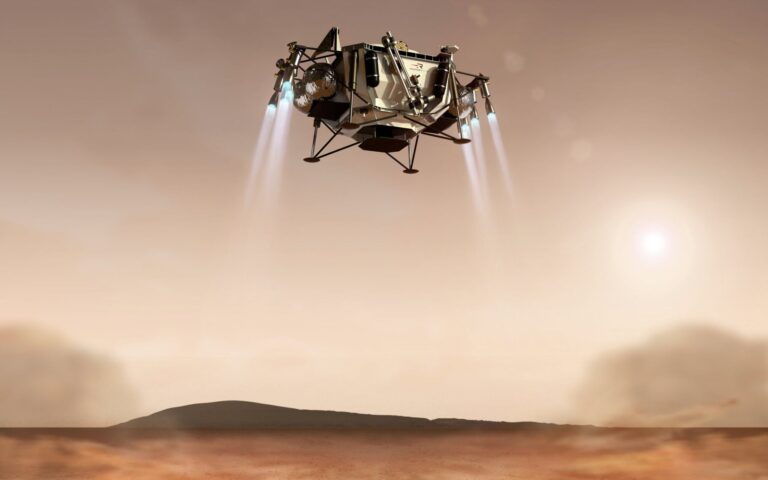In what appears to be a jab at NASA, Rocket Lab this week unveiled its own plan to return rock and dust samples the space agency has been collecting from Mars’ Jezero Crater since 2021.
NASA earlier this week said it needs more time to determine the path forward for its Mars Sample Return program, punting a decision until mid-2026. But Rocket Lab believes the best solution is right under the agency’s nose.
“We can wait another year, or we can get started now,” the company wrote in a post on X. “This is not our first encounter with the Red Planet. The orbiters, rovers, landers, and helicopters of Mars all bear Rocket Lab’s fingerprints. We can deliver MSR mission success too.”
The Mars Sample Return mission, a joint NASA and European Space Agency (ESA) program, would mark the first time samples from another planet have been returned to Earth for study. Scientists believe the cigar-sized rock and dust fragments—collected by NASA’s Perseverance rover and packed into 30 titanium-sealed tubes—could hold clues about the history of the solar system, including what Earth was like before life appeared.
The mission is also expected to feature the first round-trip journey to and rocket launch from another planet. It will employ a range of specialized vehicles, multiple of which will land on the Martian surface at the same time.
But according to a NASA Independent Review Board (IRB), the mission’s complexity is driving billions of dollars in cost overruns, which could force a sample return to slip to the 2040s. Administrator Bill Nelson on Tuesday called that timeline “unacceptable.”
The space agency is evaluating two options it hopes can simplify the mission and get it back on track for a return in the 2030s. One would land vehicles on Mars using the Sky Crane method NASA previously used to land Perseverance and another rover, Curiosity. The alternative is enlisting a commercial partner to develop what Nelson described as a “heavy lander.”
According to Nelson, the Sky Crane option would cost between $6.6 billion and $7.7 billion, and the commercial option between $5.8 billion and $7.1 billion—a “far cry” from the $11 billion projected by the IRB. Depending on the architecture, NASA said it could bring samples back as early as 2035 or late as 2039.
Rocket Lab, though, said it could slash that cost to under $4 billion and return samples as early as 2031.
The launch provider was one of 11 private firms and NASA community groups commissioned to study a simplified Mars Sample Return architecture. But Richard French, vice president of business development and strategy for space systems at Rocket Lab, told SpaceNews the agency gave it the cold shoulder.
“We received very little to no feedback on our inputs,” French said.
Rocket Lab’s architecture resembles NASA’s original Mars Sample Return profile, with a few tweaks.
The first step would be to launch a Mars Telecommunications Orbiter, not mentioned in NASA’s plans, to support the mission’s other vehicles. Following behind it would be an Earth Return Orbiter and Mars entry and descent system, housing a sample retrieval lander and Mars ascent vehicle (MAV).
The lander would serve as a launch pad for the MAV—carrying an orbiting sample container—to fly to Martian orbit, where it would link up with the Earth Return Orbiter and pass off the samples. Within the Orbiter would be an Earth entry system designed to clean, contain, and deliver the samples with a landing in the Utah desert.
NASA officials on Tuesday said they would prefer for the samples to be sterilized on Mars rather than in orbit. But other elements of Rocket Lab’s architecture—such as the MAV and sample retriever—align with the space agency’s plans.
The company further argued that its systems are already proven on Mars. For example, Rocket Lab said, it built the solar panels that powered Perseverance’s cruise stage spacecraft and the Ingenuity Mars helicopter. It is also developing the twin spacecraft—nicknamed Blue and Gold—for NASA’s Escape and Plasma Acceleration and Dynamics Explorers (Escapade) mission to Mars, scheduled to fly this spring.
NASA’s move to delay a Mars Sample Return decision until mid-2026 also drew the ire of The Planetary Society, a nonprofit group advocating for planetary science. The group urged the incoming Trump administration to speed things up and keep the program funded.
“We remain concerned that NASA is again delaying a decision on the program, committing only to additional concept studies,” it said in a statement. “It has been more than two years since NASA paused work on MSR. It is time to commit to a path forward to ensure the return of the samples already being collected by the Perseverance rover.”
French, meanwhile, told SpaceNews NASA should scrap the Sky Crane option and let commercial companies battle it out for proposals or contracts. Trump’s pick to lead the space agency, SpaceX ally Jared Isaacman, could make that happen. The Planetary Society’s Casey Dreier told FLYING that Isaacman, a government outsider with deep ties to the private space industry, will likely bring a “commercial mindset” to the agency.



